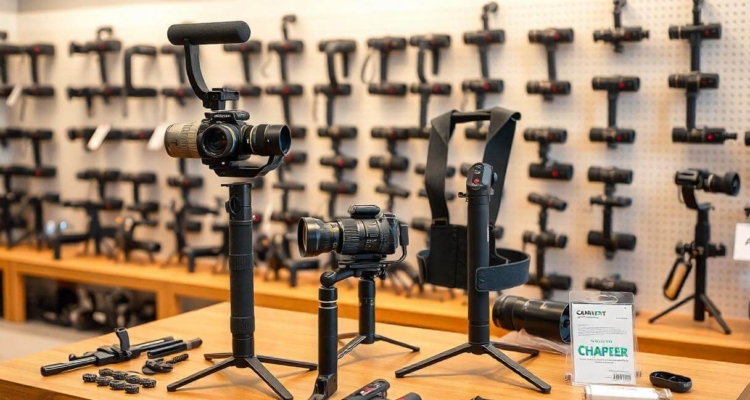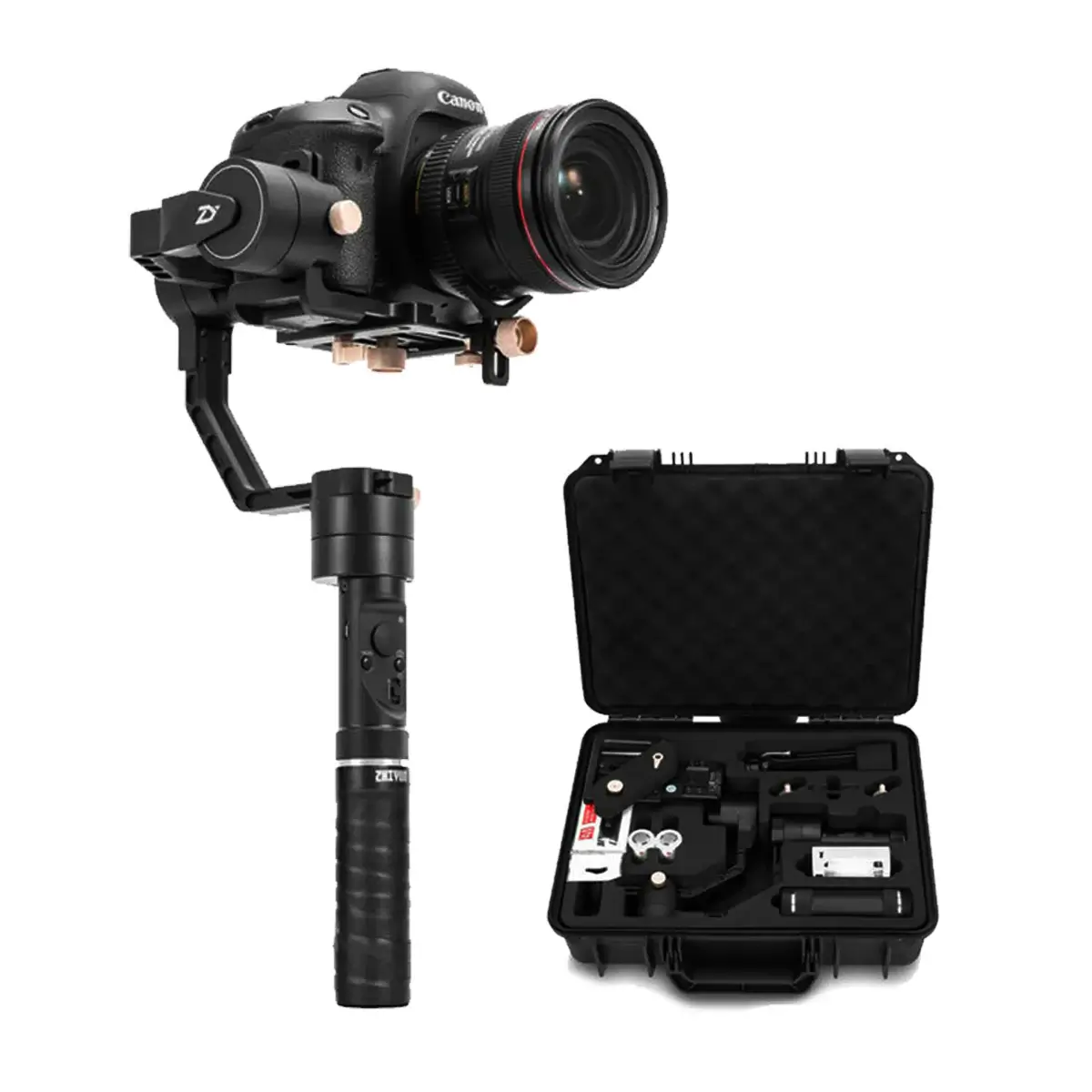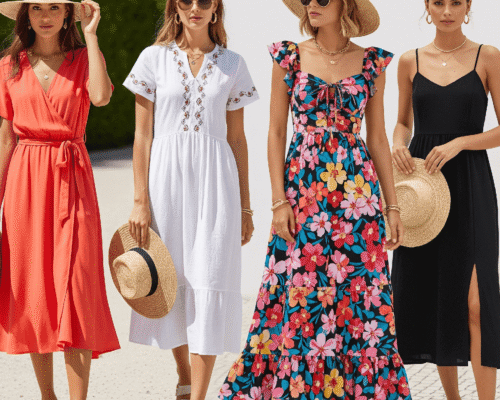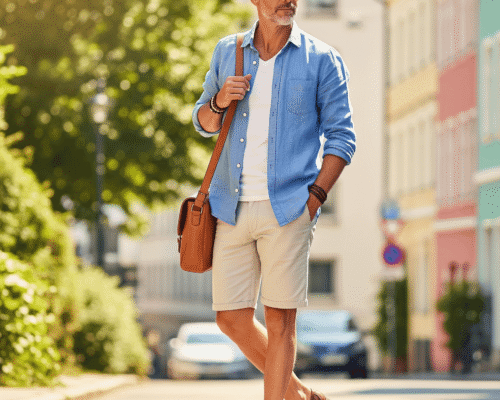Building a versatile summer dresses wardrobe is the key to feeling confident and stylish all…

Unlock Perfect Shots: Camera Stabilizer for Ultimate Success
Today, with the pace at which filmmaking and photography are going on, perfect shots are absolutely a must for the message in the film to reach the audience. The most critical issue while trying to get this is camera shake, often blurring footage, looking very professional, and so on. Consequently, the camera stabilizer is something that rose to revolutionize the scene in the field. In this article, we are going to explore the use of camera stabilizers in filmmaking-how they work and their benefits for your next shoot.
What is a Camera Stabilizer and Why Do You Need One?

A camera stabilizer is an equipment or system designed to stabilize the camera, eliminating or minimizing camera shake and movement. This allows footage to be captured with a smooth, silky, and professional look and feel, thus considered an important aspect of gaining attention and conveying a specific message. This utility of the stabilizer can come in very handy when using handheld, aerial, or motion shots wherein some movement is involved by the camera. Without a camera stabilizer, the footage would be jittery. This means that a message cannot be conveyed effectively as the picture does not appear clear.
Cameras stabilizers also shoot great in low lighting conditions. Even with slight movements of your camera, you would create noise and distortion in images. A stabilizer lets you shoot high definition video in the most challenging light you can imagine. Additionally, camera stabilizers are not for professional photographers only, but hobbyists and enthusiasts who just want to take their photography and videography to the next level.
Uses of Camera Stabilizer
- Support for Recording Devices:
- Designed to support cameras of all shapes and sizes for smooth, stable recording.
- Built to be both solid and lightweight, enhancing comfort during use.
- Balance and Stability:
- Prevents cameras from toppling over when mounted on skinny poles.
- Helps adjust balance to avoid drops and ensure stability.
- Shock Absorption and Handshake Reduction:
- Absorbs shocks to maintain steady shooting.
- Reduces handshake to prevent video shakes and ensure smooth footage.
Understanding Camera Shake and Its Effects on Your Shots

Camera shake is the involuntary movement of a camera due to factors such as hand movement, wind or weight. This will create a blurred scene in the footage which will not be acceptable for professional productions. Camera shake affects the aesthetic and mood of the video since it becomes amateurish and unprofessional.
When camera shake is extremely high, frames lost could be massive, leaving footage jerky or stuttery. This is particularly problematic where continuity holds sway-continuous scenes. Even mild camera shake can prove to be a distraction where the overall impact of the footage becomes impaired. To get that look in footage professionally, one finds it indispensable to minimize camera shake and use camera stabilizers for silky smooth shots.
The quality of the audio coming out from the video will also be affected by camera shake. This mainly occurs when recording video while the camera is in motion. This means that the video may have its sound distorted or echo. That is very hard to correct when it comes to postproduction. The use of a camera stabilizer results in high-quality audio and video with easy editing and production.
How does a camera stabilizer work?

Camera stabilizers are stabilized devices using a combination of mechanical and electronic systems to cancel camera movement. The most common type of camera stabilizer is the handheld stabilizer that utilizes a counterweight to compensate for the movement of the camera. A camera is attached to it, and the balance of the weight is then found by adjusting the counterweight for smooth movement.
Vest stabilizer systems use a vest-like device that is worn about the body by the cameraperson. The vest has a camera attached, and the device uses gyroscopes and accelerometers to stabilize the camera if it moves, making adjustments accordingly. 3-axis gimbals are a type of camera stabilizer, with use of motors and sensors to stabilize the camera in all axes- roll, pitch, and yaw.
Camera stabilizers can also tap on the advanced technologies, such as artificial intelligence and machine learning, in order to analyze camera movement and even make appropriate adjustments in real time. Thus, the footage will be smooth and continuous even when shooting in challenging conditions. Understanding how camera stabilizers work therefore helps you choose the right type of stabilizer for your specific needs in order to shoot professional-looking footage.
Types of Camera Stabilizers
1. Handheld stabilizers

The most conventional camera stabilizers are handheld stabilizers. They are simple and lightweight, easy to carry, and perfect for handheld shots. Handheld stabilizers have a counterweight to regulate the movement caused by cameras, hence providing an extremely stable and smooth shot. They are also relatively cheap in terms of cost, prompting practitioners and professionals alike to experiment with them.
2. Vest stabilizer systems

Vest stabilizer systems are for longer shoots or more complex camera movements. They are applied by having the cameraperson wear a vest-like device around their body and attaching the camera to the vest. Such a device gives the cameraperson much more freedom of movement, permitting much tighter control over the camera. Vest stabilizer systems are most often applied in documentary work, wildlife filmmaking, and other applications where portability and stability are key.
3. 3-axis gimbals

The 3-axis gimbals would be the most advanced type. They make it possible to stabilize a camera on all three axes (roll, pitch, and yaw) using motors and sensors, so long footage is smooth and continues without interruptions. Often, gimbals of this type are applied in high-end productions, aerial cinematography, etc.
Benefits of Using a Camera Stabilizer for Your Next Shoot
- Improved Image Quality: So the camera stabilizer reduces camera shake and blur and makes it clearer, professional-looking footage. And that’s not to mention enhancing your final product to look really polished, obviously supporting the visual itself.
- Enhanced Viewer Engagement: By providing smoother, more stable footage, camera stabilizers help maintain viewer interest and engagement. A steady shot is more captivating and easier for audiences to follow.
- Greater Flexibility and Creative Freedom: Camera stabilizers can offer great flexibility to have a move with the camera in different means. This range brings to you the possibility of taking complex shots that would otherwise prove tough for completion.
- Reduced Risk of Lost Frames and Stuttering: Stabilizers provide less lost frames and stutter, or even freezing, which especially is bad for action scenes shot at a rapid pace; or situations like continuity scenes where this could somewhat affect the frame. This makes it so the footage is apparently professional.
- High-Quality Audio and Video Footage: With a stabilizer, you achieve high-quality audio and video, making the editing process smoother and more efficient. This contributes to a more polished and well-produced final content.
Conclusion
Camera stabilizers can make smooth, professional quality footage. They help reduce camera shake and blur, gaining clear, more eye catching visuals. The types of stabilizers the handheld, vest systems, and 3-axis gimbals will direct you to the best match for you, thus helping make this investment work even easier towards editing and in the final product. An article about camera stabilizers explains that with a camera stabilizer, you can get perfect shots and really bring your photography and videography to life.
Read Next: Lighting with Strobes: Essential Tips for Magical Shots



